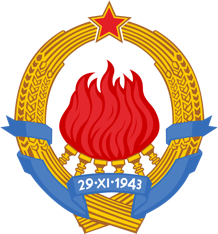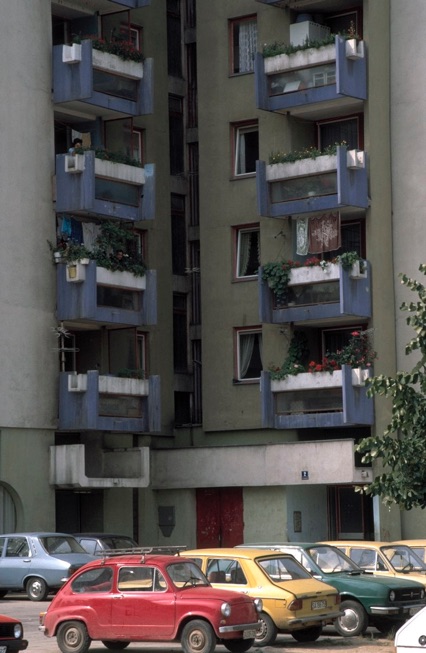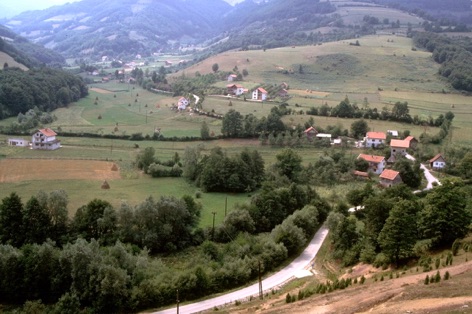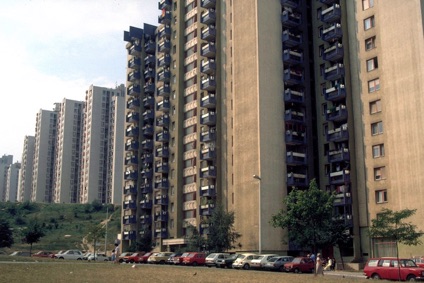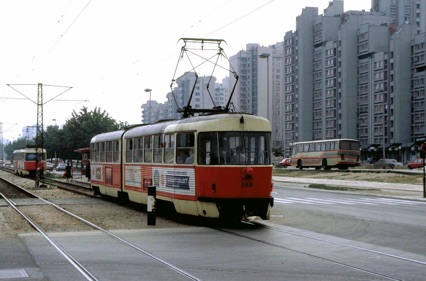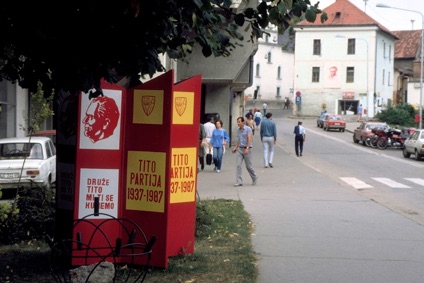Europe 1987

Kyrgyzstan and Tajikistan 2018

We were later leaving Sarajevo than we had hoped this morning. After some thought, we decided not to stop to see the Latin Bridge where Gavrilo Princip shot Archduke Franz Ferdinand of Austria in 1914 to spark World War I, not because we weren’t interested (we were), but because we knew we had a long drive ahead of us – more than 500 kilometres to the vicinity of Ljubljana in Yugoslavia’s far north.
Before leaving Sarajevo, we stopped briefly to photograph some very nice high rise socialist housing blocks near the tramline on Bulevar Meše Selimovića, the main road leading out of Sarajevo towards the west. (As a footnote, about five years later this road became the scene of fierce fighting during the Bosnian Civil War of 1992-1996 when it was nicknamed Snipers Alley. Only the bravest or most stupid pedestrians attempted to walk along the footpaths or roadway, ducking for cover behind makeshift barriers as they did so. Drivers who couldn’t avoid the area drove through at high speed without stopping to avoid snipers’ bullets, and the area’s burnt-out and shot-out car wrecks and barricades became symbols of the tragic siege of Sarajevo).
Having completed my task of photographing the trams and high-rise housing estates in the glorious morning sunshine of much more peaceful times, we headed north on our long drive towards Ljubljana. The route we took in the morning was through Zenica to Jajce, where we stopped for lunch. Jajce is a significant town in Yugoslav history because it was where Josip Broz Tito declared the Yugoslav Republic in 1943, thus establishing Communist rule that was independent of the USSR and the Red Army and charting a non-aligned trajectory for Yugoslavia that always remained outside the Soviet Union’s circle of satellite countries. As a bonus, it was also a very pretty town architecturally, and thus most worthy of a stop.
Our long afternoon drive continued northwards through Ključ, Bravsko, Bihać, Karlovac, Novo Mesto, and on to Grosuplje, about 10 kilometres short of Ljubljana. Yugoslavia continued to impress us with its scenic beauty – mountains, valleys, small villages perched picturesquely on hillsides, or nestled in valleys. On the other hand, its roads were often poor, which made travelling slow, as did the many undisciplined drivers who had very little road sense. Like Hungary and Bulgaria, there was a wide range of types of cars (mostly Eastern European) in Yugoslavia, although there were more Western types (especially Volkswagens) in Yugoslavia than in those countries. There were also small numbers of locally made cars – Zastavas and Yugos – that seemed to be based on Fiats – they were often in poor condition and didn’t seem to move very quickly.
We couldn’t help thinking that of all the countries we had visited in Eastern Europe, Yugoslavia must surely have the most potential for a bright, prosperous future. There was a working mix of government ownership and functional private entrepreneurship, state control never seemed oppressive, and the country seemed to work harmoniously as a diverse mix of different ethnic groups that prior to Tito’s government had long-standing and deep enmities. Events over the subsequent decade proved how deluded we were.
As we approached Grosuplje, we noticed that the character of farming changed substantially and a distinctive form of hay storage known as the kozolec (hay rack) became dominant. Our accommodation for our final night in Yugoslavia was a four-bed room in a motel we came across beside the highway where we also had a lovely dinner. After dinner, it was time for Liesl and Phillip’s nightly Maxwell and Maxine story*, followed by a good night’s sleep.
*By way of explanation for those readers who are not in my family, Maxwell and Maxine are people with human bodies and dachshunds’ heads who live and function in a world just like the one we live in. After dating for many years, they married and now have two children, a boy named Maximilian and his younger sister named Maxette, who uniquely, has a human head on a dachshund’s body. They love each other very much and have many exciting and often humorous adventures.

Day 30
Sarajevo to Grosuplje
Tuesday 11 August 1987
